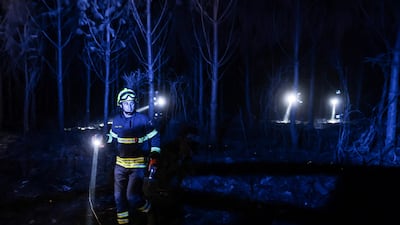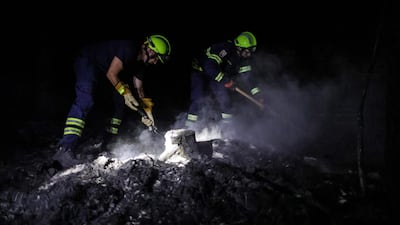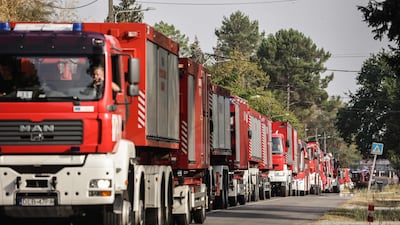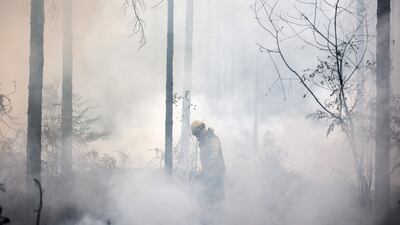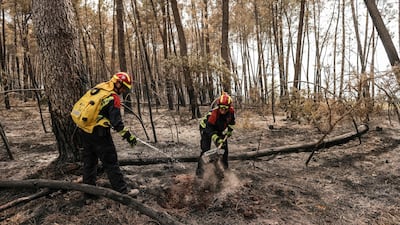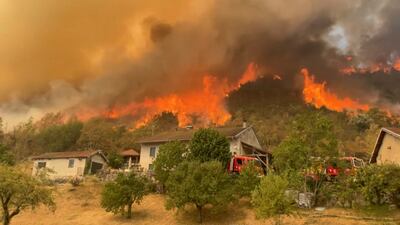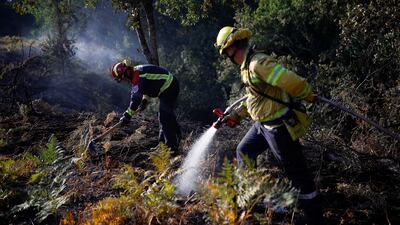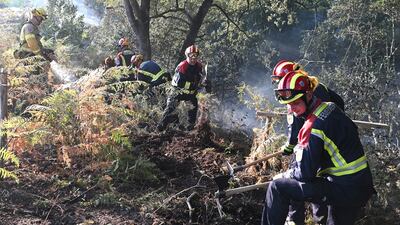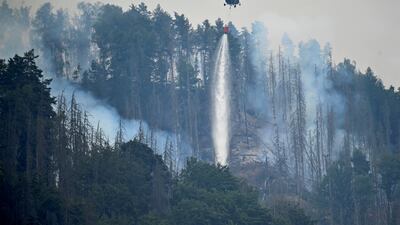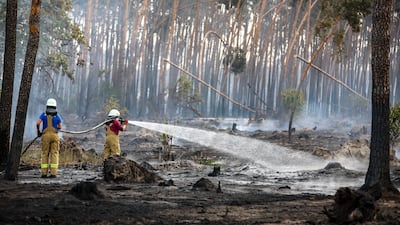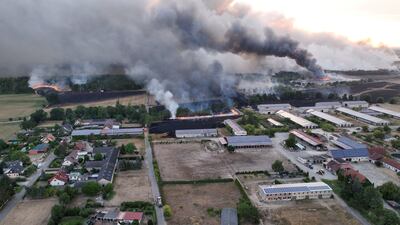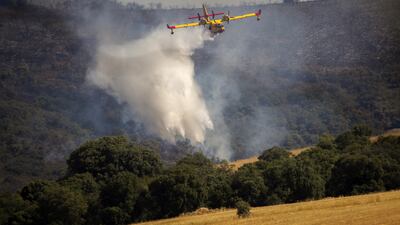So many people died from disease, war and enslavement during the European conquest of the Americas that Amazonian forests grew back, reducing atmospheric carbon dioxide and perhaps contributing to the “Little Ice Age” of the 17th century.
Today, forests provide a more positive hope of limiting global heating. But the current approach is failing.
The idea of biological-based carbon credits is that an emitter of carbon dioxide – say, an airline – can fund a project that protects trees, plants new ones, or conserves other carbon-containing ecosystems such as peat bogs – wetlands with partially decayed vegetation – or mangroves. These projects are accredited under approved methodologies by major registries such as Verra and Gold Standard.
In the ideal case, such offsets balance out carbon dioxide emissions, protect a fragile ecosystem, bring some benefits to local communities, and have other positive impacts such as anchoring soils and limiting flooding.
But in recent months, it has become abundantly clear that bio-based offsets have significant problems that render them useless or are even counterproductive and environmentally harmful.
One of the most dramatic developments came in Zimbabwe last month. Kariba, a forest protection project covering an area almost twice that of the emirate of Dubai, saw its main partner South Pole withdraw. The project sold 23 million tonnes worth of credits, for almost $100 million, but its climate benefits appear to have been overstated by a factor of five, while money went to the developers rather than the local communities tasked with actually reducing deforestation.
This should perhaps have been obvious from the cheapness of such offsets: $1 to $2 per tonne of carbon dioxide for “low-quality” credits and up to $10 to $20 for high-quality ones. If it were that cheap to stop global warming, we would have done it already. For comparison, carbon prices in the world’s leading trading system, that of the EU, currently range around $90 per tonne and are likely to go much higher.
Companies may skimp on reducing their emissions, instead buying credits to claim to be “carbon neutral”, or falsely convince consumers that unsustainable activities can be cheaply offset.
Some problems are practical. Proper measurement and verification is tricky and expensive, especially if done well, although new satellite methods offer improvements.
Carbon runs between trunks and leaves, roots, dead wood, charcoal and carbon in soils, and when disturbed, some may be released.
Trees don’t soak up much carbon dioxide immediately when planted, but only as they grow to maturity over several decades. That is problematic when we are facing rapid warming today. Once mature, trees absorb little extra carbon, yet they have to be kept alive or replaced with new growth in perpetuity.
A hotter planet sparks stronger wildfires. California, Canada, Australia and the Mediterranean have been hit by vast conflagrations in recent years. This can wipe out millions of tonnes of offsets in hours, eliminating the reserve that issuers hold back. Drought and pests can also damage forests.
Preserving existing forests is conceptually hard to assess. Were trees ever really in danger of being destroyed? Project proponents have the temptation to exaggerate. Some studies suggest that as much as 90 per cent of rainforest protection credits are worthless.
Reforestation might seem more tangible. But the cheapest approach is monoculture: setting up vast plantations of identical fast-growing species. These, though, are disastrous for biodiversity, probably offering fewer habitats for wildlife than the grasslands they replace. This applies particularly to trees planted for biofuels, such as oil palms. However, only planting seeds can be ineffective when trees are not tended and are at risk of dying from drought.
Preserving or reforesting specific locations without addressing the root causes of deforestation – rising demand for meat, animal feed and biofuels – is likely to displace farming and ranching activity elsewhere. Locals may be excluded from areas they had relied on for food and firewood and see little of the payments made.
Yet, it is good to pay to protect vulnerable forests and other ecosystems. It is good to keep carbon out of the atmosphere or draw it into plants and soils. It is good to bring another source of income to impoverished rural communities. And it is essential to find affordable ways to counteract residual, unavoidable emissions. So how do we make the offset system work?
Accounting, methodological fixes, more scrutiny and reviews are only tinkering around the edges.
Financial reporting and dealing with real dollars recorded in bank accounts is prone enough to fraud and scandals – think how long Enron was able to fool investors and regulators.
Much harder is measuring levels of soil and trees and then assessing the counterfactual of how much carbon would have been emitted in the absence of offset projects.
A real fix would have three key components. First, bio-offsets are a temporary form of carbon storage. They should only be issued in alignment with the actual growth of a forest and its carbon storage.
The credits should endure for a defined period, like a bond, that has to be repaid – either with a new issuance or with a permanent form of carbon removal such as storing carbon dioxide underground or turning it into solid minerals. If a project is logged or destroyed by pests or wildfires, credits should have to be replaced immediately.
Second, the amount of the offset should be discounted to represent the displacement of some deforestation to another location.
Third, the social and biodiversity effects should be separated from carbon storage and valued individually. Companies that contribute to deforestation – such as logging, agribusinesses and biofuels makers – could offset that part with contributions from governments.
At Cop28, which starts at the end of this month in Dubai, topics of debate include carbon offsets and trading, compensating lower-income countries for losses and damage due to climate change, bringing finance to developing countries, and the role of carbon capture and storage.
Proper use of bio-based offsets has the potential to tie all of these challenges together. But cosmetic fixes are not enough. The system can only be saved by a root-and-branch rethink.
Robin M. Mills is chief executive of Qamar Energy, and author of The Myth of the Oil Crisis
What drives subscription retailing?
Once the domain of newspaper home deliveries, subscription model retailing has combined with e-commerce to permeate myriad products and services.
The concept has grown tremendously around the world and is forecast to thrive further, according to UnivDatos Market Insights’ report on recent and predicted trends in the sector.
The global subscription e-commerce market was valued at $13.2 billion (Dh48.5bn) in 2018. It is forecast to touch $478.2bn in 2025, and include the entertainment, fitness, food, cosmetics, baby care and fashion sectors.
The report says subscription-based services currently constitute “a small trend within e-commerce”. The US hosts almost 70 per cent of recurring plan firms, including leaders Dollar Shave Club, Hello Fresh and Netflix. Walmart and Sephora are among longer established retailers entering the space.
UnivDatos cites younger and affluent urbanites as prime subscription targets, with women currently the largest share of end-users.
That’s expected to remain unchanged until 2025, when women will represent a $246.6bn market share, owing to increasing numbers of start-ups targeting women.
Personal care and beauty occupy the largest chunk of the worldwide subscription e-commerce market, with changing lifestyles, work schedules, customisation and convenience among the chief future drivers.
Mercer, the investment consulting arm of US services company Marsh & McLennan, expects its wealth division to at least double its assets under management (AUM) in the Middle East as wealth in the region continues to grow despite economic headwinds, a company official said.
Mercer Wealth, which globally has $160 billion in AUM, plans to boost its AUM in the region to $2-$3bn in the next 2-3 years from the present $1bn, said Yasir AbuShaban, a Dubai-based principal with Mercer Wealth.
“Within the next two to three years, we are looking at reaching $2 to $3 billion as a conservative estimate and we do see an opportunity to do so,” said Mr AbuShaban.
Mercer does not directly make investments, but allocates clients’ money they have discretion to, to professional asset managers. They also provide advice to clients.
“We have buying power. We can negotiate on their (client’s) behalf with asset managers to provide them lower fees than they otherwise would have to get on their own,” he added.
Mercer Wealth’s clients include sovereign wealth funds, family offices, and insurance companies among others.
From its office in Dubai, Mercer also looks after Africa, India and Turkey, where they also see opportunity for growth.
Wealth creation in Middle East and Africa (MEA) grew 8.5 per cent to $8.1 trillion last year from $7.5tn in 2015, higher than last year’s global average of 6 per cent and the second-highest growth in a region after Asia-Pacific which grew 9.9 per cent, according to consultancy Boston Consulting Group (BCG). In the region, where wealth grew just 1.9 per cent in 2015 compared with 2014, a pickup in oil prices has helped in wealth generation.
BCG is forecasting MEA wealth will rise to $12tn by 2021, growing at an annual average of 8 per cent.
Drivers of wealth generation in the region will be split evenly between new wealth creation and growth of performance of existing assets, according to BCG.
Another general trend in the region is clients’ looking for a comprehensive approach to investing, according to Mr AbuShaban.
“Institutional investors or some of the families are seeing a slowdown in the available capital they have to invest and in that sense they are looking at optimizing the way they manage their portfolios and making sure they are not investing haphazardly and different parts of their investment are working together,” said Mr AbuShaban.
Some clients also have a higher appetite for risk, given the low interest-rate environment that does not provide enough yield for some institutional investors. These clients are keen to invest in illiquid assets, such as private equity and infrastructure.
“What we have seen is a desire for higher returns in what has been a low-return environment specifically in various fixed income or bonds,” he said.
“In this environment, we have seen a de facto increase in the risk that clients are taking in things like illiquid investments, private equity investments, infrastructure and private debt, those kind of investments were higher illiquidity results in incrementally higher returns.”
The Abu Dhabi Investment Authority, one of the largest sovereign wealth funds, said in its 2016 report that has gradually increased its exposure in direct private equity and private credit transactions, mainly in Asian markets and especially in China and India. The authority’s private equity department focused on structured equities owing to “their defensive characteristics.”
Killing of Qassem Suleimani
Our legal columnist
Name: Yousef Al Bahar
Advocate at Al Bahar & Associate Advocates and Legal Consultants, established in 1994
Education: Mr Al Bahar was born in 1979 and graduated in 2008 from the Judicial Institute. He took after his father, who was one of the first Emirati lawyers
%3Cp%3E%3Cstrong%3ETHE%20SPECS%3C%2Fstrong%3E%0D%3Cbr%3EEngine%3A%203.5-litre%20V6%0D%3Cbr%3ETransmission%3A%209-speed%20automatc%0D%3Cbr%3EPower%3A%20279hp%0D%3Cbr%3ETorque%3A%20350Nm%0D%3Cbr%3EPrice%3A%20From%20Dh250%2C000%0D%3Cbr%3EOn%20sale%3A%20Now%3C%2Fp%3E%0A
The specs
Engine: 4.0-litre V8 twin-turbocharged and three electric motors
Power: Combined output 920hp
Torque: 730Nm at 4,000-7,000rpm
Transmission: 8-speed dual-clutch automatic
Fuel consumption: 11.2L/100km
On sale: Now, deliveries expected later in 2025
Price: expected to start at Dh1,432,000
GAC GS8 Specs
Engine: 2.0-litre 4cyl turbo
Power: 248hp at 5,200rpm
Torque: 400Nm at 1,750-4,000rpm
Transmission: 8-speed auto
Fuel consumption: 9.1L/100km
On sale: Now
Price: From Dh149,900
Ten tax points to be aware of in 2026
1. Domestic VAT refund amendments: request your refund within five years
If a business does not apply for the refund on time, they lose their credit.
2. E-invoicing in the UAE
Businesses should continue preparing for the implementation of e-invoicing in the UAE, with 2026 a preparation and transition period ahead of phased mandatory adoption.
3. More tax audits
Tax authorities are increasingly using data already available across multiple filings to identify audit risks.
4. More beneficial VAT and excise tax penalty regime
Tax disputes are expected to become more frequent and more structured, with clearer administrative objection and appeal processes. The UAE has adopted a new penalty regime for VAT and excise disputes, which now mirrors the penalty regime for corporate tax.
5. Greater emphasis on statutory audit
There is a greater need for the accuracy of financial statements. The International Financial Reporting Standards standards need to be strictly adhered to and, as a result, the quality of the audits will need to increase.
6. Further transfer pricing enforcement
Transfer pricing enforcement, which refers to the practice of establishing prices for internal transactions between related entities, is expected to broaden in scope. The UAE will shortly open the possibility to negotiate advance pricing agreements, or essentially rulings for transfer pricing purposes.
7. Limited time periods for audits
Recent amendments also introduce a default five-year limitation period for tax audits and assessments, subject to specific statutory exceptions. While the standard audit and assessment period is five years, this may be extended to up to 15 years in cases involving fraud or tax evasion.
8. Pillar 2 implementation
Many multinational groups will begin to feel the practical effect of the Domestic Minimum Top-Up Tax (DMTT), the UAE's implementation of the OECD’s global minimum tax under Pillar 2. While the rules apply for financial years starting on or after January 1, 2025, it is 2026 that marks the transition to an operational phase.
9. Reduced compliance obligations for imported goods and services
Businesses that apply the reverse-charge mechanism for VAT purposes in the UAE may benefit from reduced compliance obligations.
10. Substance and CbC reporting focus
Tax authorities are expected to continue strengthening the enforcement of economic substance and Country-by-Country (CbC) reporting frameworks. In the UAE, these regimes are increasingly being used as risk-assessment tools, providing tax authorities with a comprehensive view of multinational groups’ global footprints and enabling them to assess whether profits are aligned with real economic activity.
Contributed by Thomas Vanhee and Hend Rashwan, Aurifer





